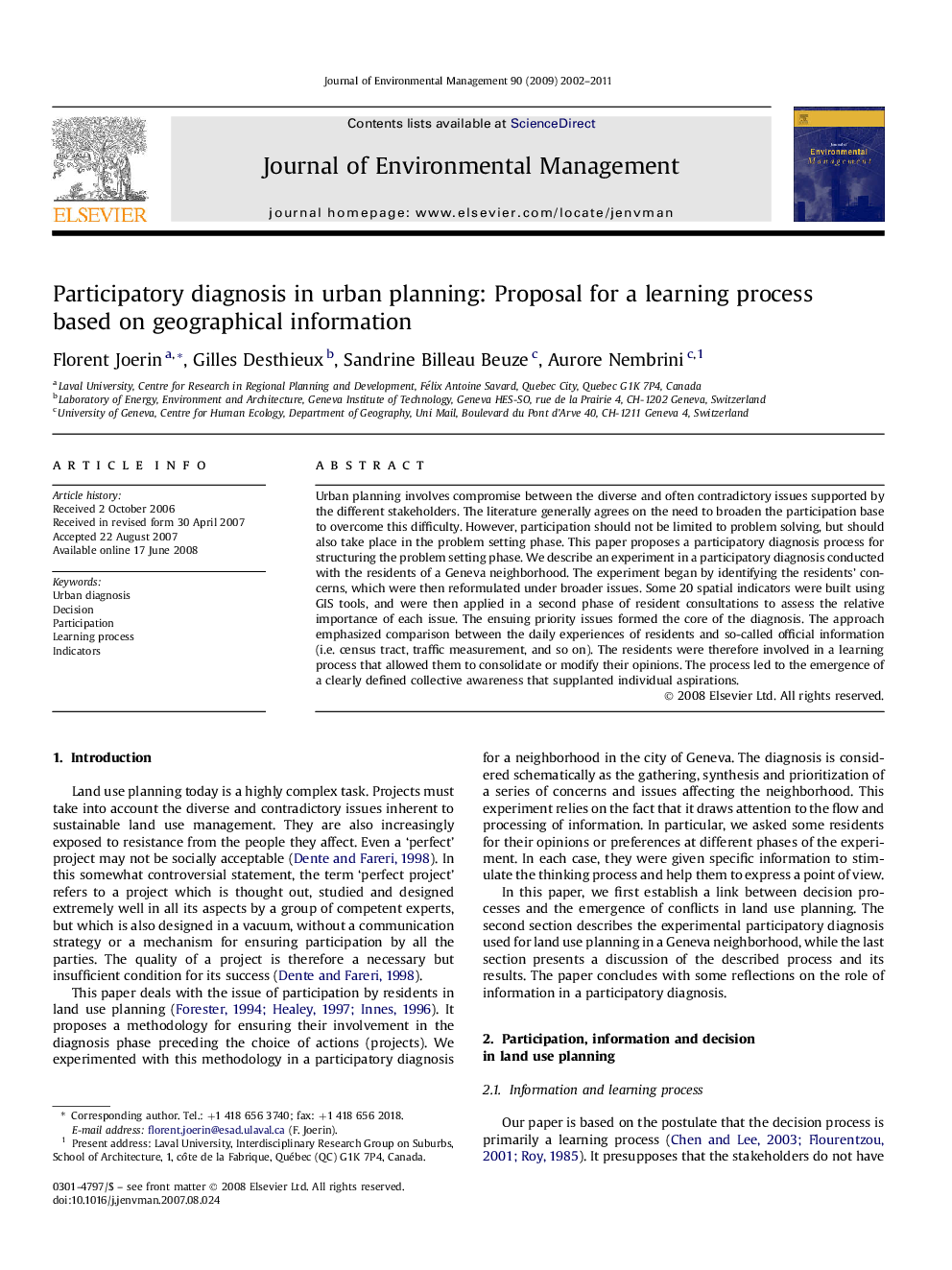| Article ID | Journal | Published Year | Pages | File Type |
|---|---|---|---|---|
| 1058242 | Journal of Environmental Management | 2011 | 10 Pages |
Urban planning involves compromise between the diverse and often contradictory issues supported by the different stakeholders. The literature generally agrees on the need to broaden the participation base to overcome this difficulty. However, participation should not be limited to problem solving, but should also take place in the problem setting phase. This paper proposes a participatory diagnosis process for structuring the problem setting phase. We describe an experiment in a participatory diagnosis conducted with the residents of a Geneva neighborhood. The experiment began by identifying the residents' concerns, which were then reformulated under broader issues. Some 20 spatial indicators were built using GIS tools, and were then applied in a second phase of resident consultations to assess the relative importance of each issue. The ensuing priority issues formed the core of the diagnosis. The approach emphasized comparison between the daily experiences of residents and so-called official information (i.e. census tract, traffic measurement, and so on). The residents were therefore involved in a learning process that allowed them to consolidate or modify their opinions. The process led to the emergence of a clearly defined collective awareness that supplanted individual aspirations.
